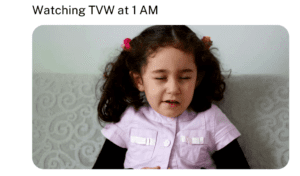The Illinois General Assembly approved the state’s Fiscal Year 2023 (FY 2023) spending plan early Saturday morning. We expect Governor J.B. Pritzker will sign the package into law in the coming days.
The final budget (HB900) includes a welcome increase of $54.4 million (10.0% increase) in state funding for preschool, evidence-based home visiting services, and center-based infant-toddler programs funded by the Early Childhood Block Grant (ECBG) at the Illinois State Board of Education (ISBE).
It also includes $7 million (6.4% increase) in additional funding for the Early Intervention program, fully restoring the FY 22 funding cut. The legislature also appropriated $1 million (6.0% increase) in new funding for Illinois’ Department of Human Services’ evidence-based home visiting programs, the first funding increase in nearly 20 years.
“This budget makes investments in several early childhood programs, including home visiting, and restores state funding of Early Intervention – which are key supports for our state’s youngest learners and their families,” Ireta Gasner, Start Early vice president of Illinois policy, said. “Approving a state spending plan requires difficult and critical decisions, and this year, the Pritzker Administration and the General Assembly made decisions that prioritize services for families with young children.”
State funding in the FY 2023 budget (HB900) includes:
- A $54.4 million (10%) increase in state funding for the Early Childhood Block Grant at ISBE
- A $7 million (6.4%) increase in state funding for the Early Intervention (EI) program at IDHS
- A $536,000 (5.3%) increase for Healthy Families at IDHS
- A $480,000 (7%) increase in state funding for Maternal Child Home Visiting (formerly Parents Too Soon) at IDHS
- Level-funding (0.0%) for the Child Care Assistance Program (CCAP) at IDHS, though the administration has committed to increase provider reimbursement rates twice over the next fiscal year
- A new $2.0 million appropriation to IDHS for deposit into the Off-Hours Child Care Program Fund (see below for further details)
- A $2.5 million appropriation to the Office of State Treasurer for the Children’s Savings Account Program.
In addition, Start Early and its partners have strongly advocated all year for the need to increase compensation for the early childhood professionals working for community-based organizations. We strongly encourage ISBE and IDHS to allocate a sizeable portion of these funding increases to boost compensation for teachers and staff working in child care centers, home visitors and Early Intervention professionals.
Several other important measures impacting the early care and education system (and the families that use it) have been approved by the legislature, including:
- HB4242 (Collins, Morrison) – a bill that:
- Extends automatic eligibility to CCAP for parenting youth in care and families on the DCFS Extend Family Support Program (EFSP)
- Extends automatic eligibility to EI for infants and toddlers in the child welfare system
- Requires DCFS to pay child care providers the same reimbursement rates IDHS pays its providers through the CCAP program
- Requires DCFS to report data on its child care program
- HB4999 (Gabel, Villanueva) – a bill that codifies into state law the timeline (30 days) by which services for families in the EI program must be initiated after a service plan has been approved
- HB1571 (Manley, Glowiak Hilton) – a bill that creates the Off-Hours Child Care Program at IDHS to help first responders and other workers identify and access off-hours child care
- SB3149 (Villanueva, Guzzardi) – a bill that requires the Illinois Student Assistance Commission and higher education institutions to provide information about the Child Care Assistance Program and the federal dependent care to students eligible for Monetary Award Program grants
- SB3032 (Fine, Morgan) – a bill that prohibits institutions of higher education from withholding academic transcripts from current or former students because of any unsettled debts with the institution.
- SB157 (Hastings, Zalewski) – a revenue bill that, among other things, expands the Earned Income Credit benefit for all filers; extends eligibility to the EIC for those aged 18-25, those above 65, and ITIN filers; and provides a one-time child tax credit

 Social Media
Social Media  Contact Your Lawmaker
Contact Your Lawmaker  Share Resources
Share Resources 


 Photo Credit:
Photo Credit:  Elizabeth Varnell and Virginia (Ginna) Varnell Dunn
Elizabeth Varnell and Virginia (Ginna) Varnell Dunn Photo Credit: Erica Hallock
Photo Credit: Erica Hallock Dixy Lee Ray Campaign Poster (1976)
Dixy Lee Ray Campaign Poster (1976)
 Dixy Ray and her dogs at the Hanford nuclear reservation
Dixy Ray and her dogs at the Hanford nuclear reservation Official Gubernatorial Portrait of Governor Dixy Lee Ray
Official Gubernatorial Portrait of Governor Dixy Lee Ray







 Map of Washington Territory
Map of Washington Territory George Washington Bust
George Washington Bust



 Pickleball Founder (and former WA Lt. Governor) Joel Pritchard
Pickleball Founder (and former WA Lt. Governor) Joel Pritchard